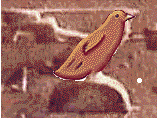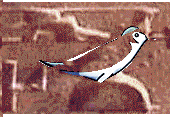|


by Jiri Mruzek
from
PrehistoricScienceArt
Website
Testing for Geometry
Table 1 (photographed November 1992 by Bruce Rawles )
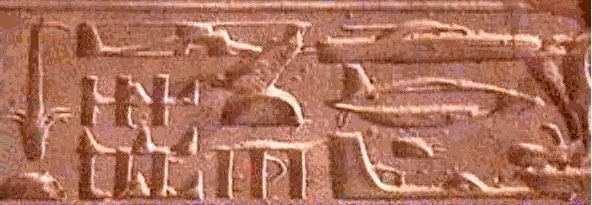
> Deus ex Machina
says:
> No scholar has dealt with this? In fact MANY have, as the
website
> comments indicate, Jiri. It
is acknowledged by all (AFAIK), that is a
> carved limestone that
was altered in antiquity with plaster, to give a
> new meaning to the
phrases. That is, BTW, part of the definition of
> a_palimpsest_,
of which these
inscriptions are a prime example.
> As I note, Mike Dyall-Smith,
Aidan Dodson, Jacques Kinnaer, Eugene
> Cruz-Uribe, and Tine
Baugh all gave similar explanations..<snip rest>
> Regards.
> Katherine Griffis-Greenberg
> Member, American Research Center in
Egypt
> International
Association of Egyptologists University of Alabama at Birmingham
>
http://www.geocities.com/Eureka/1692/index.html
Years ago, I got briefly involved in a discussion on the
so called Abydos Helicopter. The widely accepted Egyptological solutions to
the mystery of Abydos Helicopter (like the one Lumir G.
Janku gives) seem
correct at a glance, but soon doubts set in. To
register my dissent, I
put the short debate with Katherine on the web.
From there the matter was dormant until I noticed that searching the
web for
’Abydos helicopter’ googles up my article as number 1. Being
in the
spotlight was a strong incentive to improve the article’s intrinsic
scholarly
value. How?
Geometry has been my key a couple of times before to discovering
secrets of prehistoric art. No one mentioned any previous geometrical
analyses
of the Abydos glyphs, yet the eerie Abydos scene gave me a feeling that
it
might be worth the effort of checking out.
Importing the image into CAD (computer assisted drawing) enables the
type of exploration I like. If the work had been extensively planned
and measured, CAD will provide excellent means of detecting the fact.
Egyptology Skipped Past It
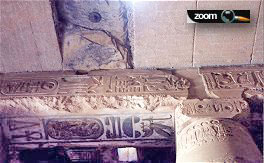 Egyptologists have identified at least
two sets of overlapping
hieroglyphics in this picture. So, what we see is
a palimpsest,
something that never was intended to be seen like it is now. It
used to be that only one set of hieroglyphs had been visible, first one
then
the other. Then the plaster fell out of the stone.
(click image right) Egyptologists have identified at least
two sets of overlapping
hieroglyphics in this picture. So, what we see is
a palimpsest,
something that never was intended to be seen like it is now. It
used to be that only one set of hieroglyphs had been visible, first one
then
the other. Then the plaster fell out of the stone.
(click image right)
What could rival such solid science?
Secret Science
Solon, Plato, Pythagoras, and other Greeks went to Egypt as the place
to get the very best education. Back in Greece, they spoke of the
secrets of the Egyptian Temple. Pythagoras taught novelties - the Golden Section, and what is now known as his triangle. Having left no
writings, he
staked no claim to discoveries attributed to him in later times.
By
Ockham’s Razor, the simplest explanation would be that Pythagoras,
who reached the top echelon of
the Egyptian Temple, had unlimited access to all its secrets - like the
Golden section. He left no writings, because he disseminated his
knowledge in secret - to selected initiates. It is patently obvious
that this
mode of behaviour is his legacy from the Egyption institution. A
mathematician hardly ever wishes
to keep his achievements secret.
Due to their discretion, Pythagoreans are tabbed as a cult. The
distinguished keepers of knowledge get slammed for preserving the
secrets of the
Egyptian Temple for us. Egypt had a religion, and the Pythagoreans were
its extension in Greece, like Solon, and like Plato. These men founded
academies and disseminated knowledge. Therefore, dubbing them cultists
is unjust if not malicious.
Granting the possession of secrets by the Egyptian
Temple, why should some of those not be perpetuated in enigmatic scenes created out of hieroglyphical Lego?
Our Abydos inscription holds one crucial ingredient -
the secret of the Golden Section, to which Egyptology is so
steadfastly oblivious.
Suppose, we can show this fact to be true - Why the secret geometry? It
guarantees and dignifies the scene of the Abydos Helicopter,
by endowing it with the unalterable logic of the Golden Section, thus
making it the opposite to the concept of chaotic palimpsests.
Reconstruction
Can anyone just fire
up a CAD program, and recreate the area under the
helicopter in its exact main proportions from memory?
Absolutely, this engraving
follows a general case from
Geometry.
The layout of the area of what is known as the Abydos Helicopter is a
study on
the basic Golden Section, with emphasis on Golden Rectangles as
products. All
objects are in the required proportions, and repose in defined
positions:
1 - a unit circle
2 - a square
3 - a horizontal distance divided in the Phi ratio
4 - an axis
5 - a big Golden Rectangle over the horizontal width (base 2.618..,
height 1.618 units)
6 - Golden Rectangles based on the unit circle (base 1 unit long,
height 0.618)
7 - Golden Rectangles based on the square
8 - 9 - 10 Squares corresponding to each rectangle size
These ten elements of one unique construction are all
comprised in the area immediately under the so called Abydos Helicopter.
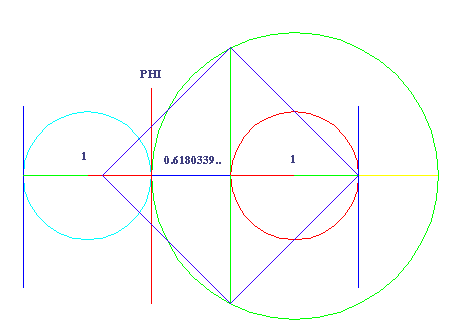
The above diagram shows the
classic construction of the Phi
ratio. Let’s lay this
diagram over the Abydos Helicopter by scaling the unit circle over the (semi)circle in the
image.
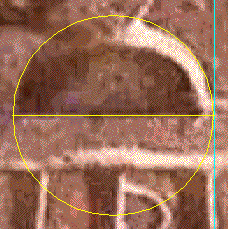
The test above shows the glyph (t) to be a rather accurate semi-circle.
It is our unit (semi)circle.
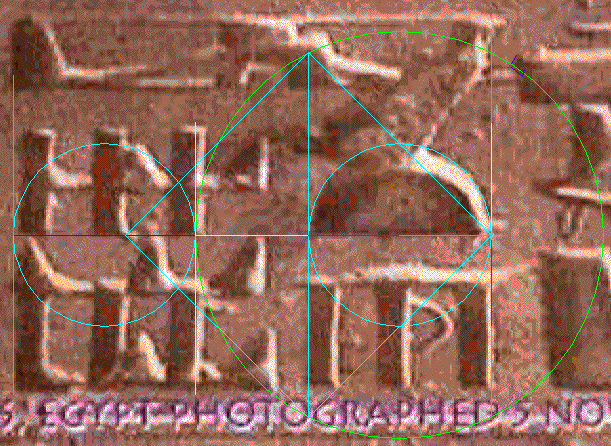
1) The circle’s diameter is one half of a
square’s diagonal.
2) Divide the horizontal diagonal of the square by the Golden Section.
3) Extend this distance (1.618.. Phi-ratio) by 1 unit. It becomes 2.618..
Phi to the second power, and also the breadth of the row
of six columns.
The Golden Section lines fit the glyph lines - on the
column edges.
The square from the
construction is the same as the square formation of
columns, and triangles in the engraving.
To get the square to its present location, it had to be rotated 45
degrees, and moved to the far line on the left, then
lowered, so that the original diagonal
becomes
the rotated square’s upper
Golden Section line (Table 6).
Table 6
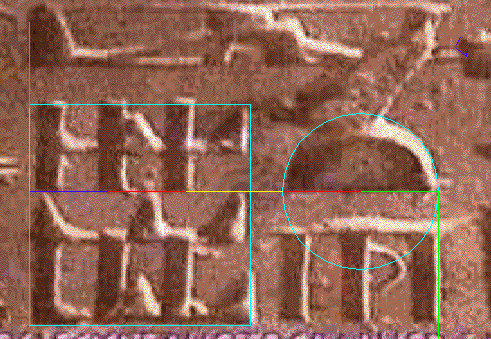
The square fits the glyphic square of columns, and triangles:
a) The left side of the square snaps onto columns.
b) The bottom side of the square snaps onto columns on the left, and
triangles on the right.
c) The top side of the square snaps onto the top triangle on the right.
d) The right side of the square snaps onto the outside edges of the top
two triangles, and the inside edge of the low
triangle line.
Table 7
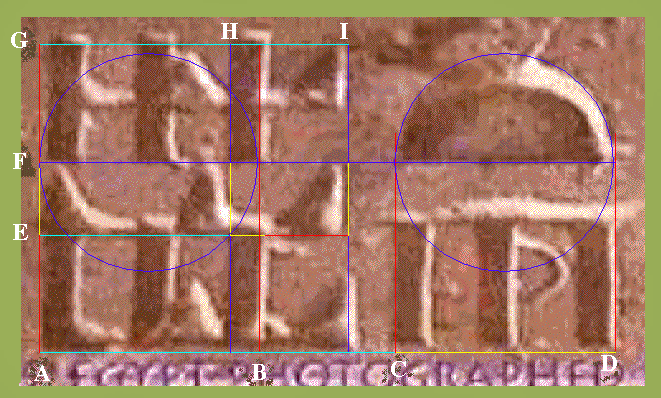
e) The middle row of triangles also sets the horizontal
lines dividing the square into golden sections
(see
E, F above). Here, the later construction (triangles)
clarifies how the older
columns got there.
The square above shows no less than eight Golden Rectangles, plus
corresponding squares. Check them all out, as these objects fit the
layout of the engraved square.
Table 8
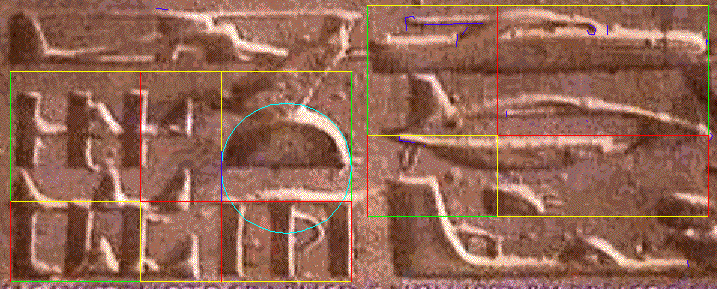
We can now also recreate the Golden Rectangle for the width of our area
under reconstruction, because its left lower corner coincides with the
square’s corner.
As shown, this rectangle contains five smaller Golden Rectangles, and
they all fit the engraving. The entire area forms a perfect Golden
Rectangle, since the helicopter’s belly rests upon the upper
line of the rectangle, although the reader does not see it at the
moment. However, this marvellous fit is easy to see in the blow-up below
(Table 9). A part of the rectangle line was cut away,
because it was masking the belly line of the helicopter. The fit
is visually perfect.
Mindful of the good fit of the other three sides, we can say that this
rectangle is highly
accurate.
Duplicate this rectangle on the upper right side, and it
fits again : width-wise, at the bottom, and horizontally
through the body of the middle row
craft.
A close-up then shows that the rectangle fits at the top, too (table
10).
Yet, while the rectangle on the left is set by the
original Seti I’s glyphs, on the right the same rectangle encloses the palimpsest, i.e., the
unpredictable result, which occurred long after the alleged re-engraving
- a miracle!
Table 9
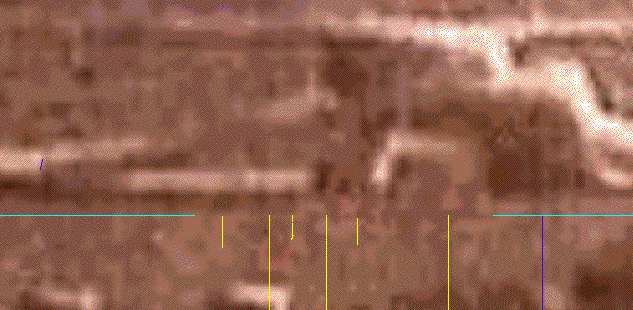
Table 10

Table 11
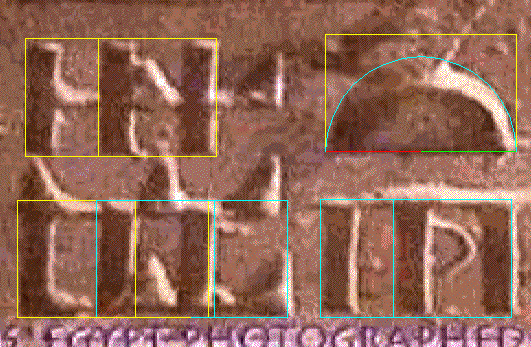
Adding, or taking away a
square from a Golden Rectangle gives another Golden Rectangle.
The
table above shows that for each of the Golden
Rectangles (from the unit circle), the
line dividing it into
a square & a smaller Golden
Rectangle - then fits over a line in the inscription.
It definitely looks like the
Egyptian
priests knew this geometrical procedure. The same rectangles and squares must
have been once seen by the engravers, as they regulated the glyph
groups. In this regard, their work is admirably
accurate.
Table 12
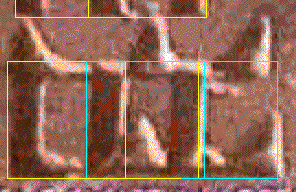
The overlap between the
rectangles propped against both sides of the square then sets the
column thickness for reconstruction. This works very well on all the
columns.
The overlap between the
rectangles sets the thickness of the triangle baselines for
reconstruction.
Table 13
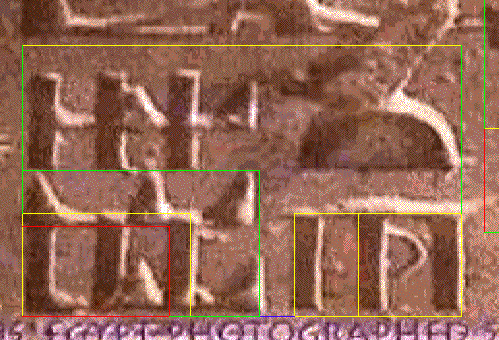
In principle, we can reconstruct the rectangles above.
Table 14
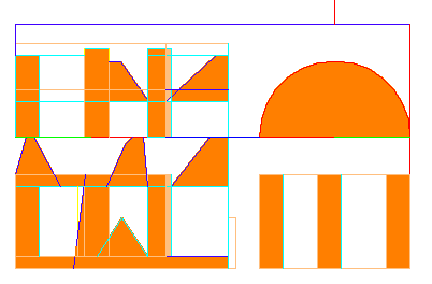
Movement or Inaccuracy?
The upper set of columns in the engraving is definitely swaying to the
right, as opposed to the plan.. Its rectangular frame is also moved
slightly to the right. On the other hand, these columns still fit the
Golden Rectangle really well. So, is this a deviation from the
plan, or is there a purpose behind it? I tend to think that there is a
purpose. One thing to consider - the upper three columns were not
needed for the decoding of the main idea. In contrast, the
crucial elements for the solution were adequately and admirably
accurate.
Janku points out the high quality of craftsmanship throughout the Abydos temple, and wonders
why only this one inscription and no other
suffers from shoddy quality. Well - we know that it is not true. We can
actually reconstruct almost everything in the Abydos glyphs based on
the Golden Section. This is only going to change for the better, given
time.
Table 15
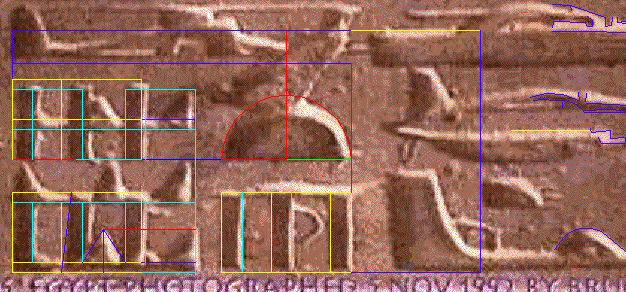
Table 16
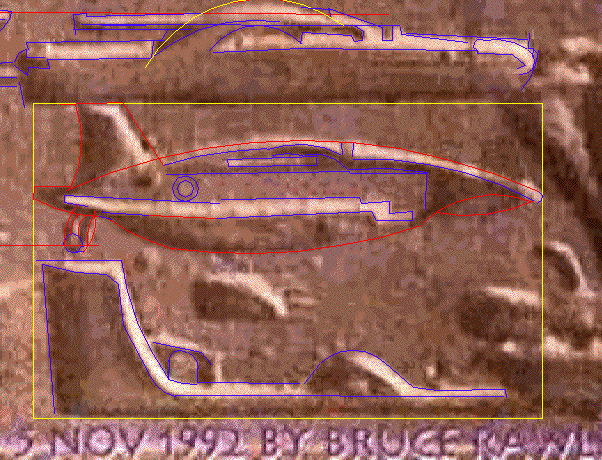
The next Golden Rectangle we find is a monster!
It fits the palimpsest,
which it should not do by any other means than coincidence. Yet,
coincidence is exactly what we have eliminated with regard to the
existence of the countless Golden Rectangles here - we have found so
many - we lost the count.
So, if the Golden Rectangle
is not a coincidence - it was
meant as the frame for the scene we see - just like the other rectangle
framing the scene under the helicopter. It certainly is the tightest
rectangular container for the two objects below the gunboat/tank. The
conclusion is inescapable - this particular ’palimpsest’ is a
deliberate creation. Such facts nip Egyptological explanations of the
Abydos Helicopter in the bud.
Table 17
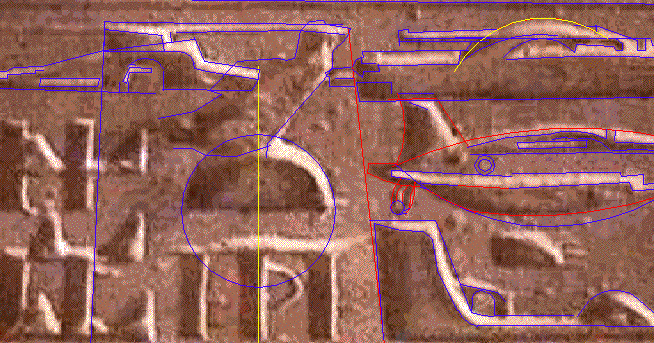
We see a couple more more alignments, which should not be
there, if the scene were really a palimpsest.
Prediction
a) The unit circle will be found to be the basic unit
of length used in the temple
or
b) The unit of length used in the temple will be found by substituting
the Cone & Square formation (learned from my
study of La Marche, and
Nasca) over the square in our
Abydos construction, and will be the same as the La Marche,
and Nasca units. If so, this would prove a
direct connection between La Marche, Nasca, and Abydos.
April 18th, 2003 - A note from the author:
I haven’t quite finished rewriting this article, but decided to put
what is there on the web anyway, as is, as it is much better than the
old one already. The reader should view the stuff below this line as
simply a collection of notes.
In December, 1998 I
pretty well signed off from the discussion with this
observation: ... contrary to the popular scientific myth that
the glyphs are engraved on a solid block, photographs indicate
otherwise. The glyphs appear to be
engraved
on a thin layer of stone facing covering the solid stone below,
except, where the facing broke
away.
There
is the self-evident - the smooth surface of the inside block laid bare,
where the limestone plate fell off - the jagged dark break line in
the facing against the smooth unbroken block - the ledge, which looks
chiseled into the pillar itself, on which the now broken plate had
rested.
Table 18
(click image)
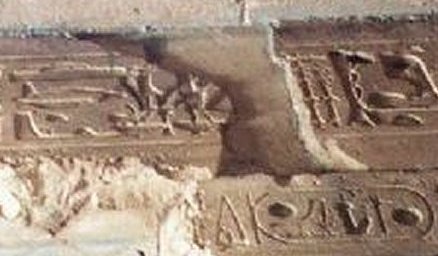
The glyphs are engraved on stone plates encasing solid
stone block, except where the plate broke away. This reveals an option
the ancient Egyptians had. Being the great stone masons that they
were,
wouldn’t it be better to:
Strip the Old
Facing, and replace it with a brand new one?
Using a ’tabula rasa’ should be far superior to hocus-pocus
plaster. If
the objective was to get
rid of the
old writing, so as not to play games with
the new writing’s future, the technique of using new
outside plates of limestone would have been most efficient in
accomplishing this goal.
The engraving work on the plates was most likely done on the ground,
then elevated into position on the supporting ledge. For any subsequent
changes, I
believe, the facing plate could be brought back to the ground, and resanded,
or replaced by a new limestone plate. This could explain the
fine quality of the glyphs.
Some obvious
disadvantages of plaster
The inscription on the stone plate was important, how could it have
been sloppily patched over with plaster?
-
For one, plaster would
be hard to match exactly to the stone’s texture and shade
of color. There would always be some shadows of the old writing
haunting the new.
-
Two,
the plaster filling is bound to react differently to changes in
moisture and temperature than the solid stone. It should become
loose in its long, narrow, and shallow bed fairly fast, and fall out
during earthquakes.
-
Three,
whoever was to alter the text had to become a willy nilly composer of
the form created out of the old and the new texts seen together. This
person had to be aware of the combined shapes lurking on the
limestone with the plaster absent, unless we presume him senseless.
Therefore, it is likely that the designer-composer would strive to give
these shapes some meaning. It is not my fault, this meaning
translates into an array of high-tech machines.
-
Four,
how could the solid, perfectionist Egyptian artisans and architects be
so naive as to rely on future help for the preservation of the usurping
texts over the old ones?
-
Lastly,
the work on the temple was still in progress in Ramses’ time. There
were materials and artisans available on site to do a solid job, no
need for the monkey business of the palimpsest unless the palimpsest
was deliberate.
Most all of Katherine’s colleagues seem oblivious to these options.
Martin Stower thought that the blocks were solid, as he wrote that the
’structural integrity’ of the blocks holding up the weight of the
massive roof might have been compromised if the Egyptians had exercised
yet another option, I had mentioned in our discussion:
Completely
Rubbing Out the fairly shallow "Old Glyphs"
Doing a solid job on the inscriptions would not require
much extra effort, considering all the work that had to be done - like
scaffolding.
Using sanded or resanded stone instead of
plaster
was the only permanent
solution,
and the
Egyptians
knew it. That’s how things were done throughout the temple with one
alleged exception - our Abydos Helicopter scene. This
strains my credulity.
Table 19
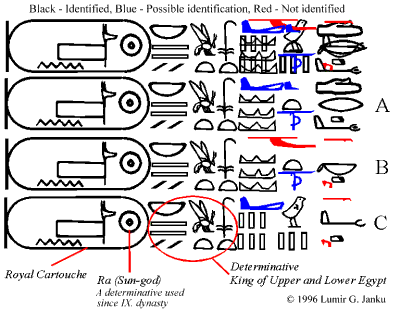
> There is a graphic
representation of the original titulary, showing how
> it was rendered a certain way, and then, by visual overlay, how
the
> successive titulary was imposed into the older one. This
representation
> is at the website as well.
That representation by Janku itself admits to a few
question marks still remaining. However, I could see more problems,
after looking closely:
1)
Not some, but
mostly all the plaster has fallen out. -
This is
attested to by the smooth and regular edges of the glyphs as they are
now.
2) The glyphs
are
a finished, or final product.. -
This is then, how
the Egyptians had seen it too - three or
four objects in a close knit formation looking like
a helicopter, and a gunboat (?), and a submarine (?), and a (?) when seen left
to right. These are the final images. They are perfectly
composed.
Table 20
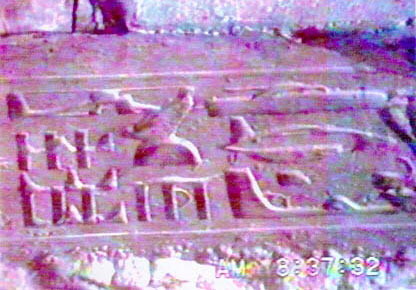
3) You do say
yourself that the new glyphs were "imposed" upon the
old ones. The whole must have been planned and tried on
the ground. So, there is no way that the
Egyptians did not see what we see today.
They knew, that’s how the final glyphs will inevitably end
up looking, after all the plaster falls off.
Table 21
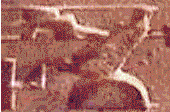
What bird?
There
is a bird perching on the (semi)circle. Janku believes it is a
chick. So, we overlay the chick over the stone shape, and it fits fairly
well,
in the head area especially. However, when we overlay another
sign
of a bird over the area - it fits even better! It fits everything
perfectly
except for the top of the head. This sign stands for negativity.
|

w |

Negativeness
|
|
Do the below birds look like birds? If so, they also fit the
’Rorschach blot’.
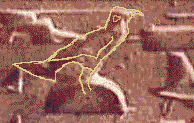 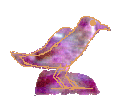 |
The Hand

 |
When we scale the width of a typical hand hieroglyph up
to the width of the glyph, the two become completely disproportional in
their
length.
Janku’s interpretation of the glyph’s origin becomes most doubtful.
Let’s remember that hieroglyphs are generally very realistic
representations
- whereas, the alleged hand glyph is highly unorthodox, and
unrealistic. It must be a record setter for distortion.
K

Katherine said:
It was decided in
antiquity to
replace the five-fold royal titulary of Seti I with that
of his son and successor, Ramesses II.
In the photos, we clearly see:
"Who
repulses the Nine Bows,"
which figures in some of
the Two-Ladies names of Seti I, replaced
by
"Who protects Egypt and overthrows the
foreign countries,"
a Two-Ladies name of Ramesses II.

Chronological Problems
of Janku’s Interpretation
Which set of hieroglyphs is older? Cyan or red?
Remember, this Golden Section construction starts with the red
(semi)circle, so all the reds (versions A and B above) should be older.
Then the newer glyphs (C above) would be akin to solving the puzzle of
the older ones.
If the (semi)circle were read as part of the newer inscription - and I
do seem to recall reading somewhere that the later foreign countries’
is symbolized by the triangles in the inscription, red like the
(semi)circle - we would have good reasons to view the fact with
suspicion, because the (semi)circle, or at least its diameter line, had
to be there at the very start, otherwise this Golden Section would have
been impossible. You have to have something to start the
section with. It’s as simple as that.
If the red glyphs are older, and the cyan triangles
newer, then the columns should not be in the red set of glyphs, because
the red set’s vertical position has to be set by the cyan triangles.
Either way, something is wrong here. Janku’s interpretation does not
agree with the geometrical procedures behind the inscription. Of
course, Janku is not a professional Egyptologist, although he gave it a
valiant try. I’ll have to ask Katherine for her
opinion on sci.archy:)
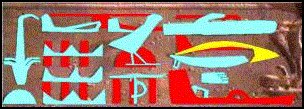
Photo: Lumir G. Janku
http://www.ufocom.org/pages/v_us/m_archeo/Abydos/abydos.html
Quote from an article by Lumir G. Janku
http://www.enigmas.org/aef/lib/archeo/abydosm.shtml
There
is one aspect of the inscription which is puzzling. The temple in Abydos (or
Abdjou, as the location was called by Egyptians), is quite a
remarkable edifice, specially as far as the quality of glyphs is
concerned. They are all very precise and
as far as I can judge, there’s no trace of sloppy workmanship anywhere
in the temple, bare
the above inscription.
!!! This really deserves an exclamation mark. How wrong can
you get? I have proven the exact opposite. The inscription is a
remarkably accurate exercise on the Golden Section...
Janku
also wrote:
The temple
was build by Seti I and finished by his son, Ramses II, during an era
of
classical revival. The obvious corrections on the inscription in
question are thus seemingly out of place. But without the translation
of
the inscription, it is difficult to propose a hypothesis for why the
original inscription was changed, apparently twice.
This must be why we don’t see any Egyptologists commit to
graphical explanation of the glyphs, preferably against the background
of a high resolution photograph. They sense that something is
wrong.
Jiri Mruzek - Vancouver, BC
Send mail to: JiriMruzek (at) Shaw(dot)ca
|
























